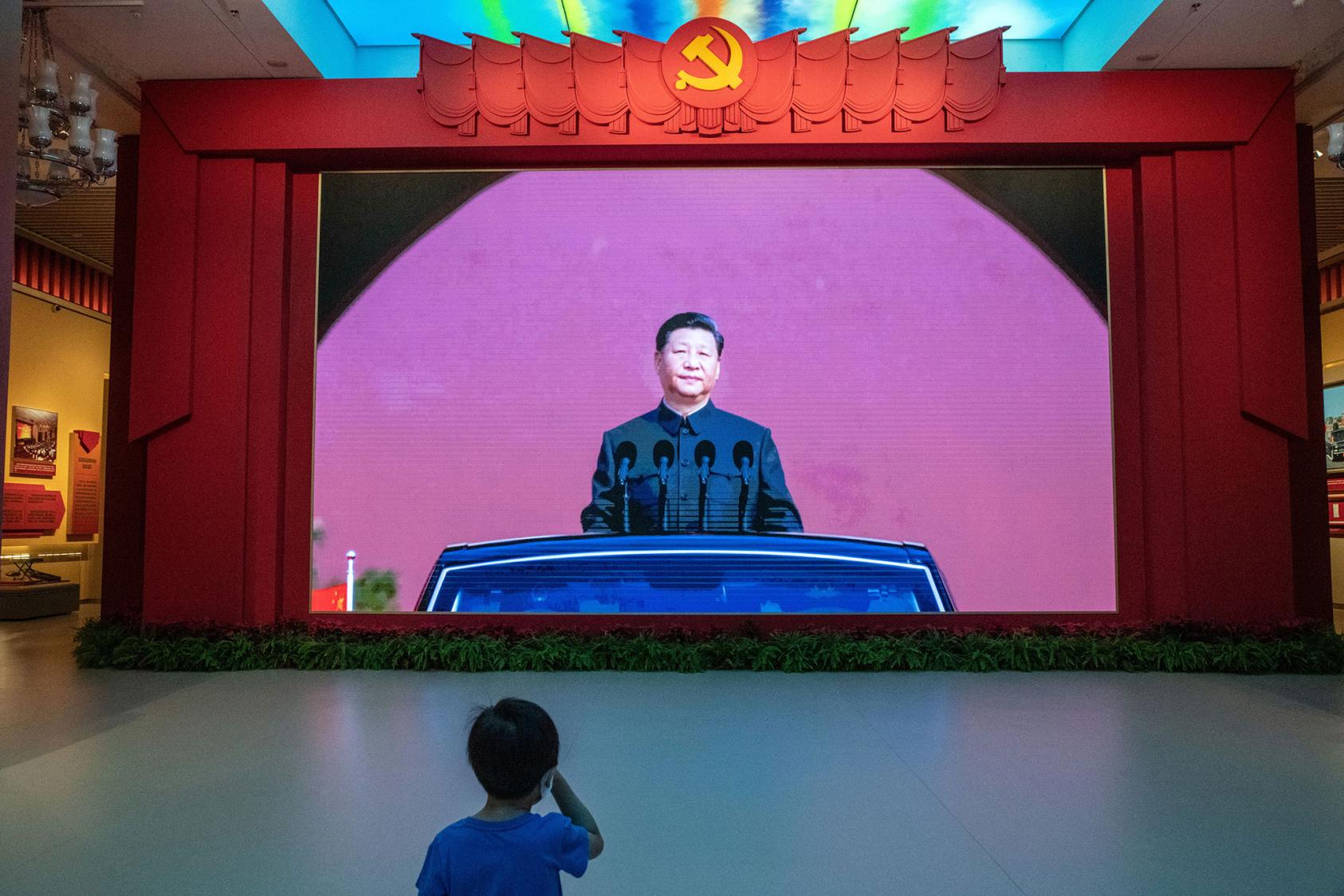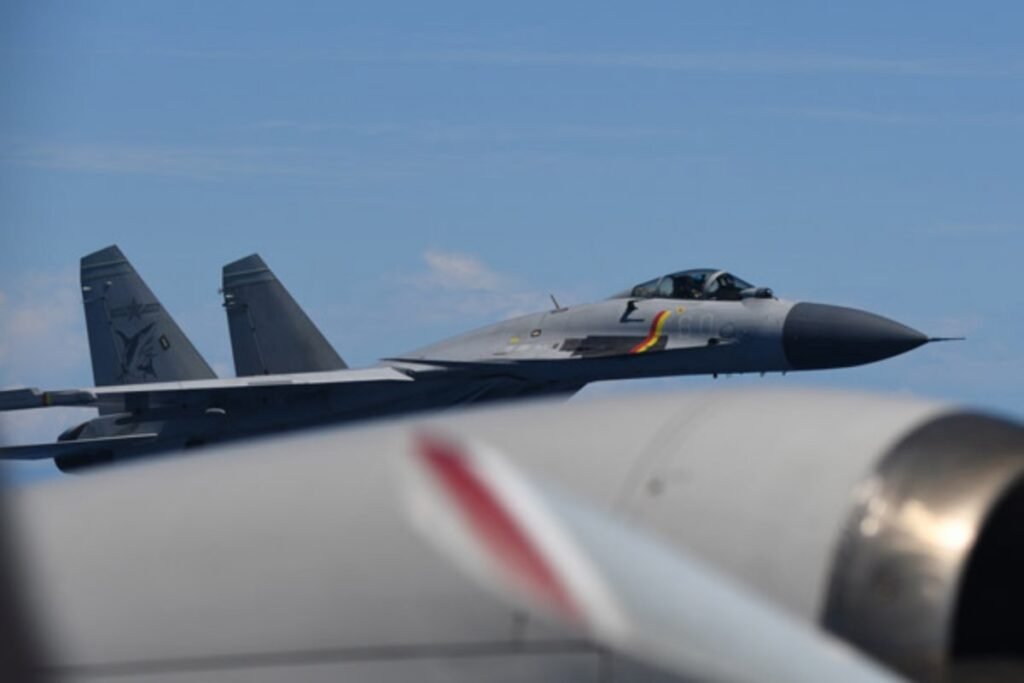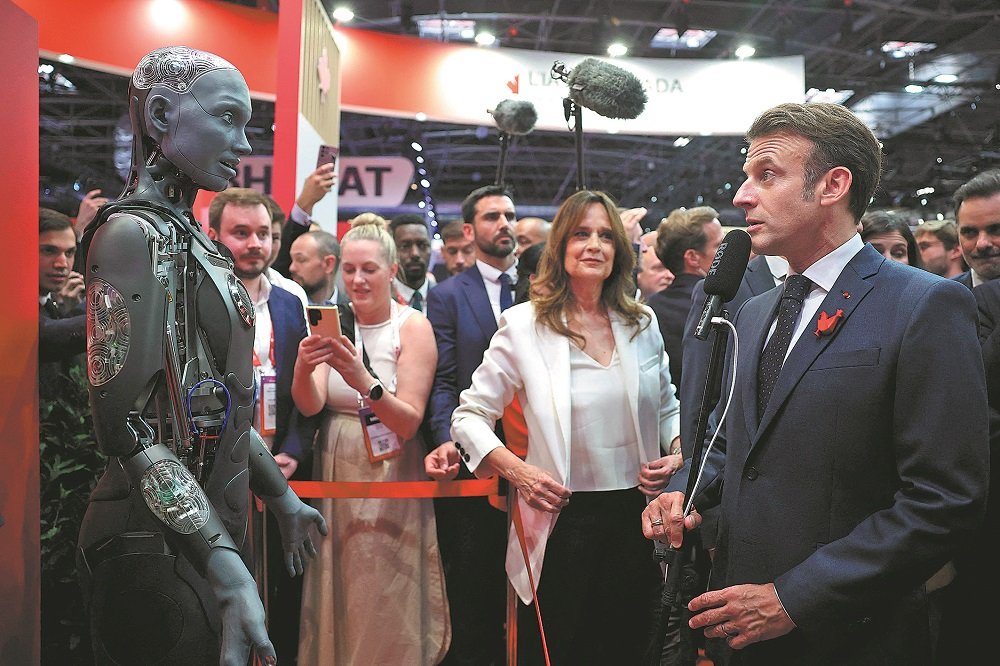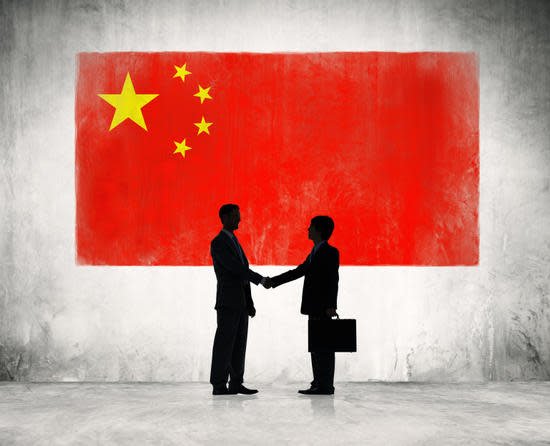In the new era of great power rivalry between the United States and the People’s Republic of China (hereafter “China”), the paradigm of strategic competition has become popular. In looking to make sense of the present global geopolitical moment and paradigm, pundits search for a relevant historical analogy. Perhaps the most oft referenced analogy for contemporary U.S.-China strategic competition — with the possible exception of the “Thucydides trap” popularized by political scientist Graham Allison — is the 20th century Cold War. Indeed, the Cold War is foremost in the minds of those in both Washington and Beijing. That Chinese decision-makers and researchers routinely insist that their U.S. counterparts are trapped in a “Cold War mentality” says as much about the current mindset in Beijing as it does about thinking in Washington. But this Cold War analogy, while useful up to a point, contains significant perils, leading decision-makers to draw dangerous conjectures about U.S.-China rivalry.

Academics and analysts vigorously debate the aptness of this historical analogy, focusing on discerning noteworthy similarities or dramatic differences between ongoing U.S.-China rivalry and the Cold War. Often overlooked in these debates is the fact that analogies are not intended to be exact in every respect. If one episode was an exact replica of another, then they would not be analogous but identical! Indeed, a “‘perfect analogy’ is a contradiction in terms,” historian David Hackett Fischer notes.
As international relations scholar Yuen Foong Khong observes: “decision-makers routinely resort to analogies or schemas to interpret the complex and uncertain environment in which they operate and respond.” However, unlike researchers, decision-makers do not have the time or inclination to explore the finer points of an analogy or apply strict selection criteria. Khong’s research demonstrates that a decision-maker’s preoccupation with a specific historical analogy can often prove to be more of a hindrance than a help.
Perhaps the greatest hazard to embracing the historical analogy of the 20th century Cold War when analyzing the current U.S.-China rivalry is that it can encourage glib suppositions and facile assumptions. In this analysis, I will highlight two perils. First, since the United States and Soviet Union were able to quash escalation spirals and successfully avoid direct superpower-on-superpower military conflicts — both conventional and nuclear — many believe it should be straightforward for the United States and China to manage their rivalry and avert hot wars. This can generate overconfidence in Washington and Beijing regarding their ability to manage crises and control escalation and produce risky behavior. Second, the outcome of the Cold War can prompt zero-sum thinking about the anticipated outcome of ongoing U.S.-China rivalry. In Washington, this can produce a maximalist mindset focusing on achieving a triumph akin to the American victory over the Soviet bloc in the late 20th century; in Beijing, this can reinforce paranoia about a U.S. masterplan designed to overthrow the Chinese Communist Party (CCP). Together the escalation-avoidance supposition and zero-sum outcome assumption could very easily increase the volatility of the current rivalry between the United States and China.
Peril 1: The Illusion of Hot-War Avoidance
By definition a cold war is not a hot one. Yet the Cold War was filled with hot wars. While Washington and Moscow were successful at avoiding hot wars with each other, proxy-on-proxy wars and superpower-on-proxy-power wars were common. But the fact that there were no direct U.S.-Soviet wars can lead to the facile takeaway that crisis management and escalation control efforts in the Cold War were foolproof. In short, a cursory and rosy reading of the Cold War can promote an overconfidence in the ability of the United States and China to manage crises and control escalation.
The superficial takeaway from the outcome of multiple superpower confrontations is that despite large arsenals of nuclear weapons and multiple crises, the United States and the Soviet Union were able to avert nuclear Armageddon. If Washington and Moscow could successfully manage their fraught relationship, then shouldn’t Washington and Beijing be able to do the same? The most celebrated crisis of the Cold War is the Cuban missile faceoff. On its face, the outcome would seem to support the inference that if Washington and Moscow were able to arrest escalation and avert war in 1962, Washington and Beijing ought to be able to manage in similar fashion some 60 years later. However, a careful reading of the extensive scholarship based upon a wealth of primary sources on both sides reveals a far more alarming interpretation.
A cursory and rosy reading of the Cold War can promote an overconfidence in the ability of the United States and China to manage crises and control escalation.
Cold War-era Cuba presents itself as an obvious candidate analogy to 21st century Taiwan. The analogy holds considerable appeal: both islands are located some 90 miles off the coast of a rival and each counts as their prime patron the rival’s rival. Moreover, while Cuba was a key Cold War flashpoint, it never escalated into a hot war — setting aside the ill-fated Bay of Pigs invasion that was swiftly suppressed.
While the United States has yet to install missiles on Taiwan, Washington has enhanced its military assistance to Taipei in terms of armaments and advisors. Although China has yet to launch any Bay of Pigs-style invasion, Beijing has significantly ramped up its hostility and coercive actions against Taiwan.
Although 21st century Americans tend to be somewhat confident about managing crises and concerned about miscalculation, contemporary Chinese are prone to be supremely confident about Beijing’s abilities to manage crises and control escalation. While Chinese leaders and analysts were not happy about how they handled the 2001 Hainan Island Incident, they believe that Beijing has dramatically improved its effectiveness in handling crises during the past 20 years. Moreover, Chinese political and military leaders are convinced they can contain escalation — or manage what they call “war control.”
Is Taiwan a 21st century Cuba? While the analogy has limitations, it does serve to underscore the centrality of the island in U.S.-China strategic competition. Yet, Taiwan serves as the location of an enduring, creeping cross-decades crisis or chronic flashpoint in a way Cuba never did. While Cuba brought the United States and Soviet Union to the brink of nuclear war in 1962, the flashpoint greatly diminished in intensity in subsequent years thanks to serious mutual superpower efforts at de-escalation. In contrast, Taiwan seems to be a far knottier challenge for the United States and China if only because the island has been and continues to be the most contentious issue in relations between Washington and Beijing. Moreover, each side vociferously blames the other for exacerbating the issue and demands that the other side stop “changing the status quo” even as they disagree on what the status quo was in the first place.
In other words, Taiwan is much more than a 21st century Cuba. Most notably, Taiwan stands out as China’s primary irredentist objective where Beijing’s top priority is national unification. Chinese leader Xi Jinping has explicitly linked realizing unification with Taiwan with achieving China’s grand strategy of national rejuvenation. Indeed, Taiwan has been identified as a core national security interest of China. Speculation has been rife that the People’s Liberation Army was given a deadline to seize Taiwan by 2027. For a time, multiple leading U.S. officials and analysts were asserting this as fact. More recently, this alarmist rhetoric has been scaled back. According to Admiral Samuel Paparo, the commander of U.S. Indo-Pacific Command: “This [the 2027 date] is not a go-by date. It’s a be-ready-by date.” While the distinction is important, it brings scant reassurance.
Taiwan is much more than a 21st century Cuba … Taiwan stands out as China’s primary irredentist objective where Beijing’s top priority is national unification.
Beijing’s high-profile attention to Taiwan tightly binds the island’s fate to the CCP’s political legitimacy. Moreover, both Beijing and Washington consider the island a key geostrategic strongpoint in the western Pacific — a critical link in the so-called First Island Chain — as well as a major global technology and commercial hub. In short, Cuba is not only not an apt analogy but also a dangerous one. Taiwan constitutes ground zero in U.S.-China competition — the most likely location to spark a war between Washington and Beijing. To paraphrase General Omar Bradley, applying the wrong analogy to the wrong crisis could lead decision-makers into the wrong war in the wrong place at the wrong time with the wrong enemy.
Peril 2: Zero-Sum Thinking with Winner-Loser End state
A second dangerous presumption based upon the historical analogy of the Cold War concerns the way the extended 20th century rivalry ended: an abject defeat for Moscow and resounding victory for Washington. A United States that effectively prosecuted the Cold War and emerged triumphant against a foe as mighty as the Soviet Union can surely emerge victorious at the conclusion of an extended rivalry against China. This seductive reasoning is attractive in 2020s Washington. Unsurprisingly, this historical analogy is unappealing in 2020s Beijing since it suggests the outcome of the contemporary U.S.-China strategic competition could be the overthrow or collapse of the CCP.
China’s rulers are haunted by the shocking bloodless collapse of the Soviet Union. That an erstwhile superpower and the world’s original Leninist party-state collapsed with a whimper is traumatic for China’s communists. From the earliest days of his administration, Xi’s consuming focus appears to have been to ensure that the Chinese Communist Party avoids the fate of the Soviet Communist Party. In a January 2013 speech at the Central Party School in Beijing, Xi asked: “Why did the Soviet Union disintegrate? Why did the Soviet Communist Party collapse?” The Chinese strongman admonished his fellow party leaders on the importance of the task to ensure they did not repeat the mistakes of their Soviet comrades.
But beyond this, the widespread embrace of the Cold War analogy in the United States reinforces Beijing’s fear that Washington is not interested in coexistence or accommodation. As scholar Hal Brands notes, this “could ratchet up tensions and dangers in the relationship.” The analogy serves as confirmation of Chinese leaders’ suspicions that U.S. leaders have long been intent on containing China and toppling the CCP. That prominent U.S. voices insist that “there is no substitute for victory,” further fuels this fear.
Moreover, the CCP is proving a far more daunting and adaptive adversary than the Communist Party of the Soviet Union ever was. Whereas Yuen Foong Khong characterized the Soviet Union as a “one-dimensional (military) superpower,” contemporary China is proving to be a more formidable “multi-dimensional power.” The upshot of this reality is that the United States is now engaged in competition across multiple military and non-military domains with China. All this means that U.S.-China rivalry is likely to be far more complicated, much more costly to wage and a lengthier contest than was Cold War competition between the United States and the Soviet Union.
Conclusion
Analogies are cognitive tools for making new situations and challenges more comprehensible to decision-makers. Yet, decision-makers can fixate upon an analogy and draw spurious inferences that lead to bad decisions. One fundamental mistake, as David Hackett Fischer notes, is the “ … erroneous inference [that because] … A and B are similar in some respects [then] … they are the same in all respects.”
While the Cold War can be a useful and insightful parallel when looking to understand the multifaceted challenges of contemporary U.S.-China competition, this historical analogy also presents potent perils. First, the analogy can foster overconfidence in the ability of the United States and China to avoid direct, hot war because the United States and the Soviet Union were remarkably successful in managing escalation and averting conventional and nuclear conflicts with each other. A second peril in drawing an analogy with the 20th century Cold War is that it can perpetuate zero-sum thinking in Washington and Beijing. That Washington-Moscow strategic competition ended in the disintegration of the Soviet Union encourages a U.S. mindset viewing the optimal — or even inevitable — outcome of Washington-Beijing rivalry as the end of CCP rule and resounding victory for the United States. The analogy also reinforces alarmist thinking in Beijing and bolsters the presumption that Washington’s desired end state is the CCP’s overthrow.
For the Soviet Union, Cuba proved to be a “one off” early 1960s crisis involving a distant ally over which Soviet leaders were reluctant to risk sparking a devasting all-out war with the United States. In contrast, for 2020s Beijing, Taiwan is a proximate serial crisis flashpoint, which is considered a vital national security priority of immense geostrategic and geoeconomic significance. In short, latter-day China is not the Soviet Union and contemporary Taiwan is not Cold War-era Cuba.
PHOTO: A boy views a video depicting Chinese leader Xi Jinping at the Military Museum in Beijing on Sept. 2, 2022. (Gilles Sabrié/The New York Times)
The views expressed in this publication are those of the author(s).








